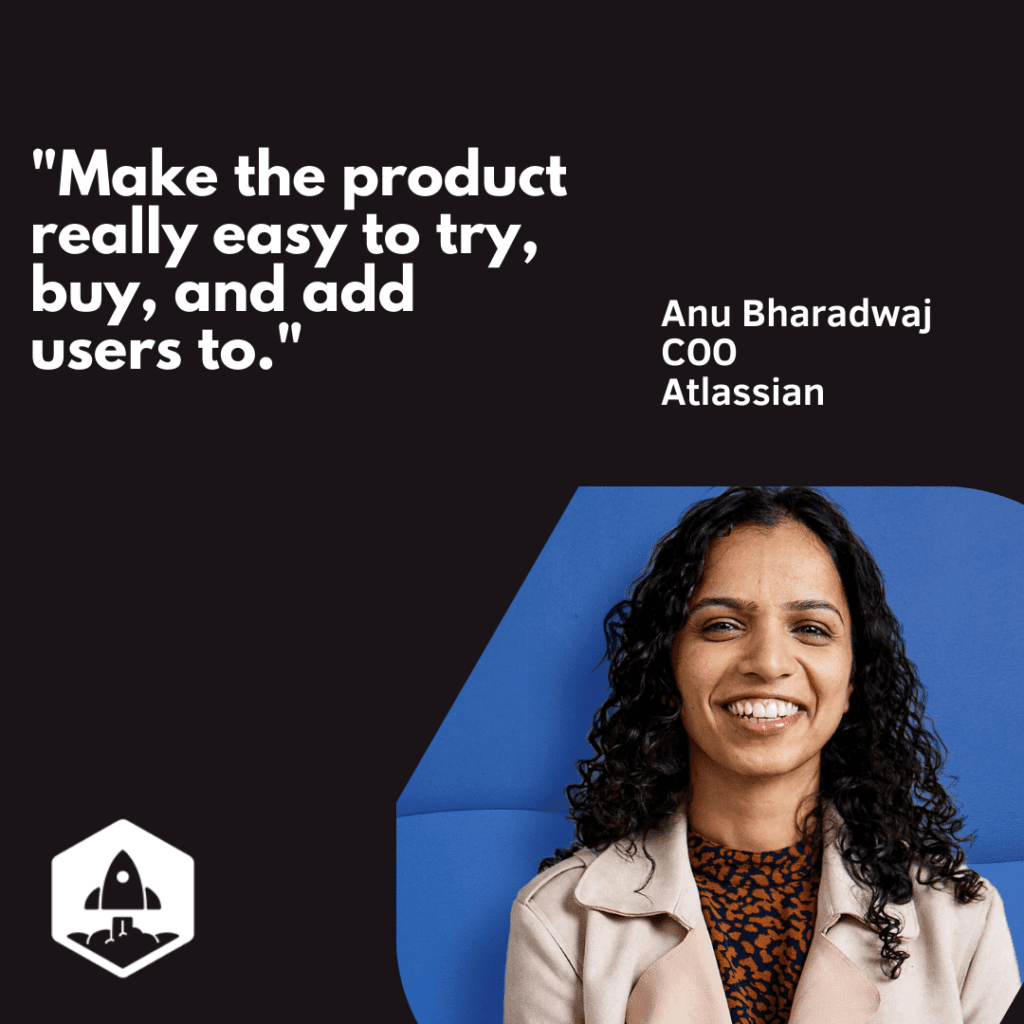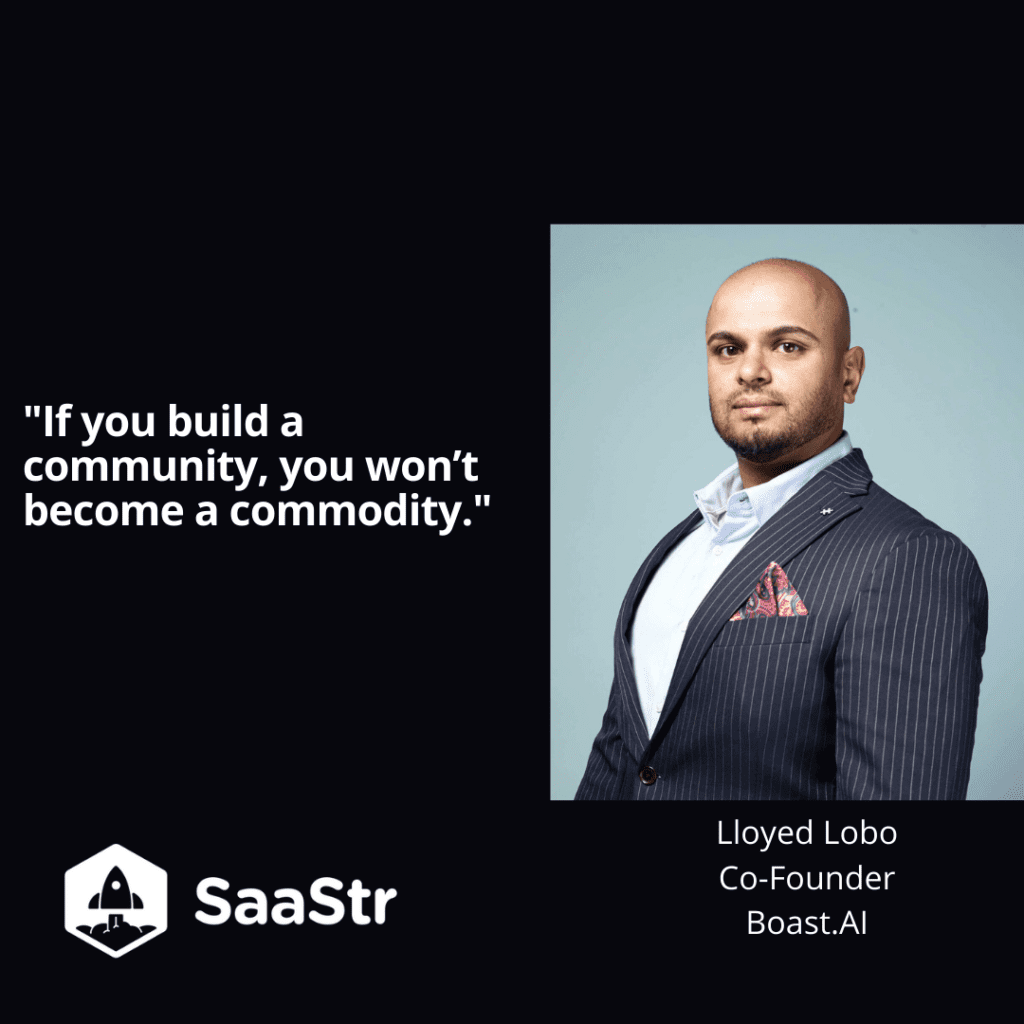The SaaS world is competitive, and standing out in a highly saturated market takes remarkable hard work and skill. However, the companies that adapt and create transformational change tend to survive. COO Anu Bharadwaj’s years of experience at Atlassian have shaped her outlook on how to thrive in the market.
In this session, Boast.AI Co-Founder Lloyed Lobo interviews Bharadwaj as she shares Atlassian’s five building blocks to win.
Enacting Transformational Change
It’s critical for a business to adapt when the situation calls for it, especially in response to new customer preferences, evolving technology, cultural movements, etc. As Bharadwaj says, “We live in a dancing landscape. It’s never quite a stable place where you can just sit back, stay complacent, and imagine that what got you here will get you to the next rung of success.”
It’s best to stay at the edge of transformational change to stay ahead. The signs that a change is needed can come externally, like a new trend or wave that impacts your product, business, or mission. For example, many companies chose to operate on a fully remote basis after the pandemic. Or, it might originate as an intrinsic reason, such as when Atlassian decided to move their business model to become a SaaS platform.
Bharadwaj shares three pieces of advice for a successful transformational change to act as general guidelines:
- Transformations must have a movement associated with them, propelled by leaders that act with courage and empathy.
- Embrace the chaos, but make sure you’re headed in the right direction. Prioritize velocity toward your goal, not speed alone.
- Learn from others. Observe how other companies have made transformational changes, but don’t emulate them so much that you lose what makes your business unique.

Investing in a Product-Led Model
According to Bharadwaj, there are several keys to achieving strong product-led growth.
- Make the product very easy to try, buy, and add users to it.
- Address the high volume of users, companies, and customer segments, not just a super-targeted small vertical.
- Use the GTM motion that’s the opposite of the traditional GTM motion. It’s a pull, not a push, when it comes to revenue expansion.
Atlassian spends about 40% of its budget on R&D and only 15% on sales and marketing, which is a different approach than many companies take. Bharadwaj recommends investing more on the “building” side of the business that focuses on creating the best possible product for the customer, with sales focusing most of their efforts on expansion. As you hire, be sure to employ passionate problem-solvers for your R&D teams and innovative challengers on your sales and marketing teams. “Overall, as you construct your team and your company, it’s important to think about the distribution across build and sell, and take a completely different vector and approach to selling,” says Bharadwaj.
Building a Community
Creating a community is a must-have ingredient for winning companies in today’s market. As Lobo puts it, “If you build a community, you won’t become a commodity.”
Communities tend to be fueled by intrinsic passion, so you can’t force anyone to care about your business unless your product influences their lives or sparks their passion. Atlassian understood that product-led growth works only if the customer base is filled with passionate product users. So they built their product to serve a dynamic community and solve a need.

Scaling an Ecosystem
Atlassian’s philosophy is that it wants to help many different teams unleash their full potential. But, as Bharadwaj freely admits, not all those teams can be served by only products that Atlassian builds. Likewise, no single company can meet every single need a team might have.
So, Atlassian wants to empower other builders to serve all kinds of teams, and the company embraces its ecosystem made up of 1500 marketplace products and third-party apps. Atlassian likes lifting up other companies that can help give teams fully rounded solutions. “Our foundational thesis is that if we provide the enabling platform services, we are going to be able to serve the long tail of teams that have various use cases.”

Leading With Empathy
Empathetic leadership is a foundational principle at Atlassian that has carried through to this day. This attitude is more important than ever as the workforce has grown to desire meaningful work, flexible work-life balance, and uplifting culture. Listen to your employees and customers, and demonstrate your commitment to lead with empathy by following up with actions.
Key Takeaways
- You must always be on the edge of transformational change to stay ahead.
- Invest heavily in R&D for the most successful product-led growth.
- Build a community rooted in the passion and interest of your customer base.

